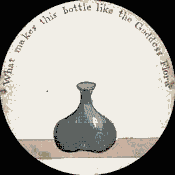
Lesson #1: Making Pictures Move

Many inventors, manufacturers and scientists have observed the visual phenomenon that when a series of individual still pictures set into motion it creates the illusion of movement - a concept termed persistence of vision. This illusion of motion was first described by British physician Peter Mark Roget in 1824, and was a first step in the development of the cinema.It has since been shown that Persistence of Vision is not truely what causes the perception of motion, but rather something called the Beta Phenomenon. Beta movement is a perceptual illusion, described by Max Wertheimer in his 1912 Experimental "Studies on the Seeing of Motion", whereby two or more still images are combined by the brain into surmised motion.
Pictures in Motion
A number of technologies, simple optical toys and mechanical inventions related to motion and vision were developed in the early to late 19th century.
These were precursors to the birth of the motion picture industry:
1824 - the invention of the Thaumatrope by an English doctor named Dr. John Ayrton Paris.

1831 - the discovery of the law of electromagnetic induction by English scientist Michael Faraday, a principle used in generating electricity and powering motors and other machines (including film equipment)
1832 - the invention of the Fantascope (also called Phenakistiscope or "spindle viewer") by Belgian inventor Joseph Plateau, a device that simulated motion. A series or sequence of separate pictures depicting stages of an activity, such as juggling or dancing, were arranged around the perimeter or edges of a slotted disk. When the disk was placed before a mirror and spun or rotated, a spectator looking through the slots 'perceived' a moving picture.

1834 - The Daedalum (renamed the Zoetrope in 1867 by American William Lincoln) by British inventor William George Horner. It was a hollow, rotating drum/cylinder with a crank, with a strip of sequential photographs, drawings, paintings or illustrations on the interior surface and regularly spaced narrow slits through which a spectator observed the 'moving' drawings.



1839 - The birth of still photography with the development of a method of capturing still images on silvered, copper-metal plates. Developed by French painter and inventor Louis-Jacques-Mande Daguerre
1841 - The patenting of calotype (or Talbotype, a process for printing negative photographs on high-quality paper) by British inventor William Henry Fox Talbot
1861 - The invention of the Kinematoscope, patented by Philadelphian Coleman Sellers, an improved rotating paddle machine to view (by hand-cranking) a series of stereoscopic still pictures on glass plates that were sequentially mounted in a cabinet-box.

1869 - The development of celluloid by John Wesley Hyatt, patented in 1870 and trademarked in 1873 - later used as the base for photographic film.
1870 - The first demonstration of the Phasmotrope (or Phasmatrope) by Henry Renno Heyl in Philadelphia, that showed a rapid succession of still or posed photographs of dancers, giving the illusion of motion.

1877 - The invention of the Praxinoscope by French inventor Charles Emile Reynaud - it was a 'projector' device with a mirrored drum that created the illusion of movement with picture strips, a refined version of the Zoetrope with mirrors at the center of the drum instead of slots; public demonstrations of the Praxinoscope were made by the early 1890s with screenings of 15 minute 'movies' at his Parisian Theatre Optique.


1879 - Thomas Alva Edison's first public exhibition of an efficient incandescent light bulb, later used for film projectors.